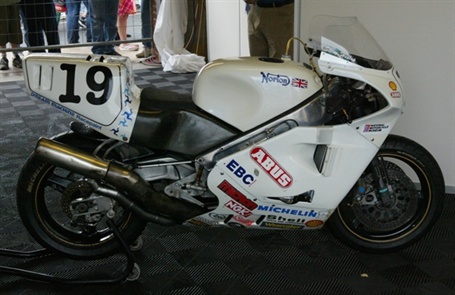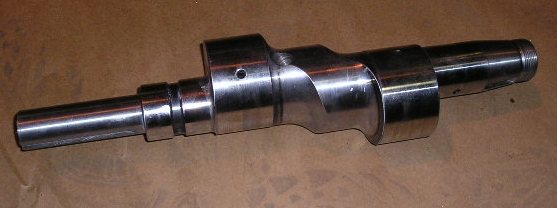Eccentric shafts for rotary (Wankel) engines
Wankel engines seem to provoke either indifference or passion in engineers. I fondly remember the times when the British motorcycle racing scene was excited by the presence of the works Nortons, the engines being based on the same units that carried the British police motorcyclists along the roads; to use the word ‘propel’ or ‘power’ seems wrong, because the police bikes were singularly unimpressive.
However, the Norton race bikes were anything but. They were incredibly fast, once the engines ‘picked their feet up’, and I remember watching them reel in the faster-starting opposition at Mallory Park in Leicestershire, England, in the late 1980s. These engines won British Superbike and Formula One championships and an Isle of Man TT race. There was even special dispensation given for the machines to compete in the 500 cc Grand Prix series in 1991 and beyond.
For every supporter, however, there was someone vehemently opposed to the Nortons, saying that their 588 cc capacity was nonsense and that they were actually twice as large. That depends though on how the engine is judged to operate. If it is classed as a two-stroke, then 588 cc is probably correct, as the engine draws in the same amount of air as a 588 cc two-stroke. You see what is coming next – the engine also draws in the same amount of air as an 1176 cc four-stroke, but it is neither, so the debate continues to rage.
In addition to the discussion over capacity, there is some debate among engineers as to the correct name for the Wankel’s crankshaft. Thankfully, as with the conventional crankshaft, engine swept volume – that is, displacement – is directly proportional to the throw of the crankshaft. The shafts, compared to those in a reciprocating engine, use much lower throws; in our usual parlance we might say they have a high degree of overlap. There is no requirement to provide thrust surfaces on the eccentrics (the equivalent of crankpins) as the thrust of the rotors is taken by the housings. There are not the large inertia forces to cope with that we have in the reciprocating engine, and with a large overlap the stresses on the bearings are modest.
Where more than two rotors are used, the crankshaft/eccentric shaft needs to be built up in stages. Each additional rotor requires an eccentric sleeve extension to be added. There have been a number of three and four-rotor engines used in racing – the Le Mans-winning Mazda 787 for example had a four-rotor engine called the R26B, and the extra rotor sections are keyed to the central section, with one fitted at each end in the case of the four-rotor design. Lubrication of the bearings was a simple matter, with eccentrics and main bearings fed from a large drilling running along the axis of the R26B’s crankshaft.
Rotary engines were always rare in racing. They were fast, but their notorious thirst for fuel meant they needed a fuel tank for many race series. Where air restrictors are used to control output, rotaries require a significantly larger restrictor area in order to be competitive. Mazda found racing success some years ago with a rotary engine, but nobody is now seriously considering rotary racers, despite a short-lived attempt by Norton a few years ago to repeat its one-off rotary TT success.
 Fig. 1 - The late Steve Hislop won an Isle of Man TT on a Norton with a twin-rotor engine
Fig. 1 - The late Steve Hislop won an Isle of Man TT on a Norton with a twin-rotor engine
 Fig. 2 - The displacement of the rotary engine is directly proportional to the ‘throw’ of the crankshaft, but beyond this, engineers fail to agree unanimously on engine capacity. This example is from a two-rotor engine
Fig. 2 - The displacement of the rotary engine is directly proportional to the ‘throw’ of the crankshaft, but beyond this, engineers fail to agree unanimously on engine capacity. This example is from a two-rotor engine
Written by Wayne Ward